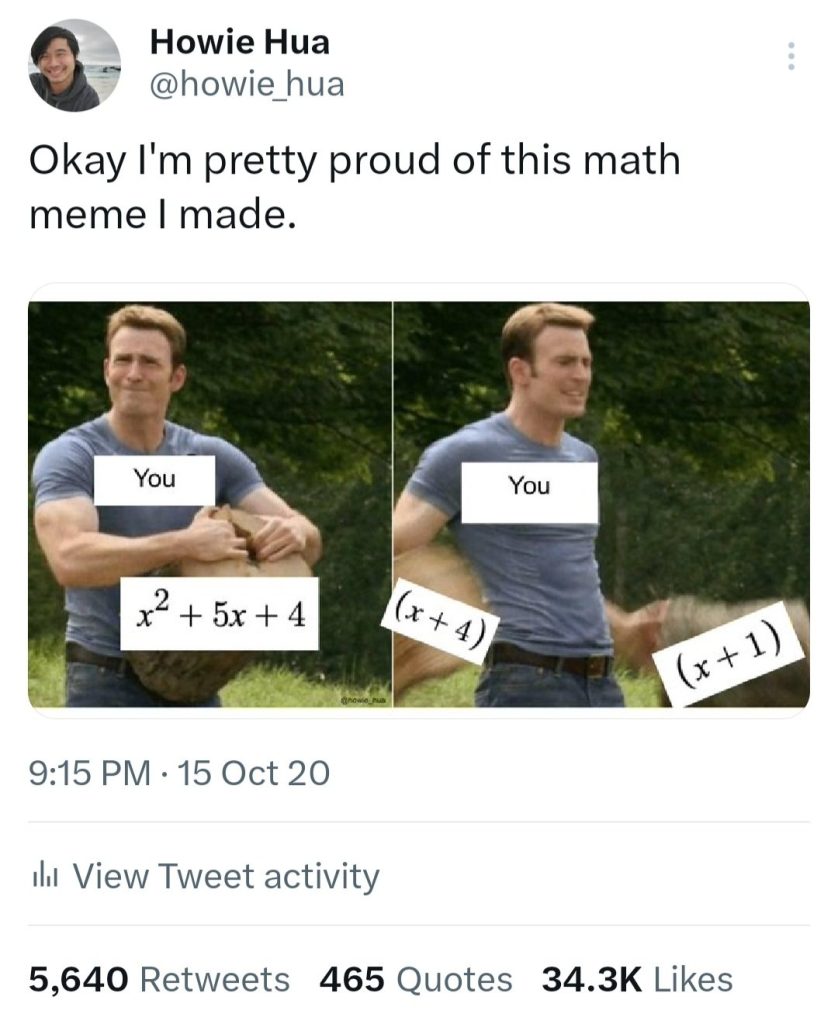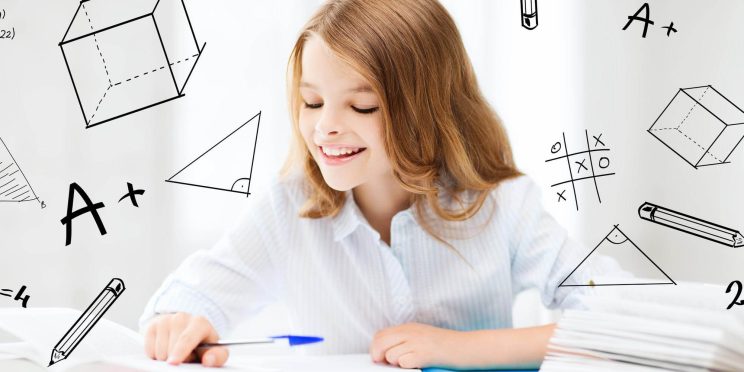If your kid has difficulties grasping math or struggles with any calculations, your child may have dyscalculia. The good news is that they can still thrive in STEM subjects with the proper support.
Check this article to find out the most effective teaching strategies for dyscalculia kids. You can overcome math challenges and develop a child’s confidence by incorporating these tips into your daily life.
How to help students with dyscalculia
To help students with dyscalculia, you should build a strong foundation with daily study sessions. Ensure that you break down complex tasks into achievable steps, and provide some movements to help your child relax.
You can also book tutoring sessions with teachers who have experience working with dyscalculia students. Studies show that it’s often linked with other neurodiverse conditions, like ADHD or dyslexia. Book the first studying session at Brigterly for free, so we can provide a personalized learning plan.
How to learn math with dyscalculia
To learn math with dyscalculia, use assistive technologies like calculators or mobile games. Implement physical objects into study sessions to make math tangible. Hands-on tools suit elementary school kids, while charts suit middle school students who learn more mathematics with abstract numbers.
You should also look for an experienced tutor who understands the specifics of this condition. Almost 6% of the human population has dyscalculia, which makes it one of the most common learning disabilities. Thus, certified teachers, such as Brighterly tutors, already have proven strategies to teach students with dyscalculia.
My child has dyscalculia: how to help them?
Encourage open communication and create a safe space so your kid can tell you about their math difficulties without fear of being judged. Implement hands-on learning, focus on closing knowledge gaps, and achieve small victories each study session. Use games, quizzes, and other interactive digital tools.
Dyscalculia tutoring with Brighterly
We at Brighterly know how to help with dyscalculia and gladly tutor your kid. With us, you’ll see the first results after the first few sessions. Our tutors have years of experience and certifications in working with students with learning difficulties.
What features a dyscalculia tutor should have?
To teach kids with dyscalculia, the tutor should have enough experience working with neurodiverse students.
The brains of those students process information slightly differently, so a dyscalculia tutor should have a deep understanding of the specific challenges faced by students with dyscalculia. It can include difficulties with number sense, spatial reasoning, and problem-solving. Ensure that they provide customized learning plans.
After the first free lesson, we determine the child’s knowledge gaps and provide them with a tailored learning plan. Our tutors develop a program that emphasizes dyscalculia-friendly studying approaches. To save you valuable time, we also find a tutor who perfectly suits the child’s needs. You can change them at any time.
6 Teaching strategies for dyscalculia
- Use physical objects
- Implement step-by-step breakdowns of each task
- Make real-world connections
- Try multi-sensory learning
- Implement technology tools
- Study with tutor
Use physical objects to make math tangible
If your child has dyscalculia or struggles with math, use manipulatives to make math more visual. It can be the next objects:
- Simple things like buttons, beads, or even rise for counting and simple interactions like addition, subtraction, and multiplying.
- Cuisenaire rods can represent different numerical values.
- Place value blocks will be great for representing units, tens, and hundreds.
- Fraction bars and circles can represent parts of a whole, making fractions more tangible.
- Geoboards and geoboard shapes can be used to represent different shapes, angles, symmetry, and geometric transformations.
- Scales will provide hands-on experience with weight and solidify understanding of addition, subtraction, and comparisons.
Let your kid count money for you. Everyone likes this action, and children are no exception
While teaching students with dyscalculia, begin with tangible objects to represent concepts, gradually transisting to manipulatives, and finally, to symbolic representations (numbers and equations).
Implement step-by-step breakdowns of each math problem
Breaking down complex problems into smaller, manageable steps is a powerful strategy for anyone learning math. Thus, it’s one of the major keys to helping kids with dyscalculia. This approach reduces overwhelming, making even complex problems less intimidating and easier to approach.
Make your instruction engaging but not wordy. Otherwise, your kid may just fall asleep
It also improves focus, as a child can concentrate on one specific task at a time. Completing each step provides a sense of accomplishment and motivates the learner to continue.
Even specific forums listed a step-by-step approach as one of the most effective under posts such as “My child has dyscalculia: how to help them?”. Implement it slowly but surely to see the first results even after the first few study sessions.
Make real-world math connections with the storytelling behind
Making math relevant and engaging is one of the best strategies for dyscalculia students. To ensure that you get the best possible results, try the following practices:
- Identify the child’s interests. Determine student’s passions and hobbies outside of math to incorporate them into studying sessions.
- Bring math into everyday activities. You can discuss fractions while cooking or teach multiplying on grocery shopping.
- Incorporate current events and pop culture. Use news stories or popular culture references that involve math. Discuss statistics in sports rankings or budgeting for a concert.
- Create comics or memes. Write short stories, draw a meme, or edit videos incorporating math.
- Play math-themed games. Develop or use games with storylines that involve math skills. Board games, escape rooms, or online simulations can make practicing math concepts fun.

Source: Twitter
The main rule in support for kids with dyscalculia is to show them that they can work in any field in the future. To show this, create projects that require students to apply math skills to real-world problems. For example, design a dream house (area, volume), plan a budget for a school fundraiser (percentages), or research careers that heavily involve math.
Try a multi-sensory math learning approach
This educational approach states that learning and retaining information is easier by engaging multiple senses at once. It’s one of the greatest approaches how to help with dyscalculia, as students don’t need to try to cram the knowledge. They can associate math actions or formulas with objects, sounds, or movements.
There are 4 primary senses that you can incorporate into the learning process:
- Sight. Place some visual hints and ensure that kids associate the material with it.
- Auditory. There are many educational songs. You can sing them with a child. While learning a catchy tune, the child automatically remembers its context.
- Touch. By manipulating objects like blocks (kinesthetic) or feeling the texture of fraction strips (tactile), children can develop a deeper understanding of numbers, shapes, and spatial relationships.
- Movement (vestibular). Simple actions can make math more engaging and improve student’s memory.
Let the child sort their socks. It unlocks multiple senses simultaneously: they see, touch, and move them. Just ensure that socks are clean so the child won’t smell them
The doctors confirm this strategy, marking it as one of the most beneficial tips that help you with your neurodiverse child. Dr. Nick Bach, Clinical Psychologist & Owner at Grace Psychological Services, states next:
“Incorporate visual aids like number lines, diagrams, and blocks into your study session.”
Integrate math into daily situations like shopping or cooking. Let them touch food and other ingredients that they are counting.
My experience with dyscalculic students shows that contextual learning boosts their mathematical abilities and increases confidence in using math in daily life.
Engaging multiple senses creates more pathways in the brain for encoding information, making it a great way to support kids with dyscalculia. You can try different learning styles until you find one that perfectly suits your child. Meanwhile, multi-sensory activities were stimulating and fun, keeping students motivated and focused.
Implement technology tools
Technology is a powerful ally that can help kids with dyscalculia. Scientific and graphing calculators can handle complex calculations, freeing students to focus on understanding the concepts behind the numbers. Talking calculators can even read aloud the numbers entered and the results.
Ensure that the chosen app has great visualization features. It would be great if the chosen service had interactive games. Many dyscalculia strategies have some interactive experience in the arsenal. If you find a captivating online service, your child may become naturally interested in playing it routinely.
Look for specific math services. Old-age math tools can be overwhelming
Make sure that the chosen tool has adaptive learning and personalized feedback features. Treatment for kids with dyscalculia should be as gentle as possible. The child is already trying their best, so providing a simplified and tailored experience is the least you can do to make them feel safe.
Study with the math tutor
Unlike a traditional classroom teacher, a tutor can focus entirely on your child’s specific challenges and learning style. Look for experts who work with neurodiverse students and know how to teach a child with dyscalculia.
They will determine the child’s knowledge gaps. Later, they’ll develop a personalized learning plan. We also recommend that you choose online teachers over offline ones. With them, you don’t need to drive to the studying place. Your child can do math from the comfort of your home couch or backyard.
Many online tutoring platforms incorporate interactive whiteboards, screen sharing, and engaging interactive activities.
3 unusual ways to help with dyscalculia at home
If you think that your child may have dyscalculia, make math physical! Connect math with daily activities. Don’t be afraid to integrate physical activity into math lessons. Clapping patterns, counting jumps, sorting objects by color, or following a treasure hunt with math clues can be ways to learn while having fun.
Explore the history of different concepts. Tell your kid about mathematicians and their discoveries. Learning the “why” behind math can spark curiosity.
Focus on the child’s strengths in math. This will boost their confidence and motivation. Celebrate even the smallest progress. Create a safe space for the child to ask questions and express frustrations without judgment.
Conclusion
With the knowledge of how to treat dyscalculia, your child can build a strong foundation in math and develop confidence in their abilities. Try multi-sensory learning and break down each math problem. Don’t overwhelm your child with complex tasks. Break them down into smaller, achievable steps with clear explanations.
Connect math to everyday life through cooking, budgeting, or following recipes. Storytelling and historical context can also spark curiosity. Celebrate small victories and create a safe space for open communication about frustrations.
Brighterly’s approach goes beyond rote memorization and emphasizes building a strong foundation in math concepts. It is crucial for students with dyscalculia who may struggle with traditional drill-and-fill methods. Book the first lesson today to see the first results tomorrow!



